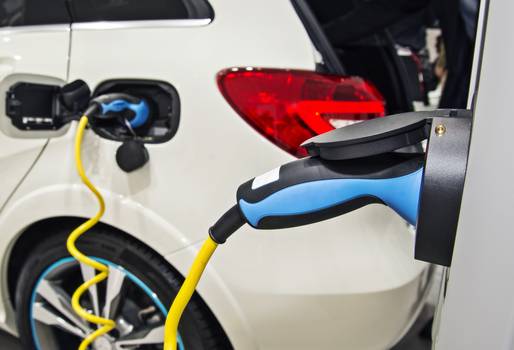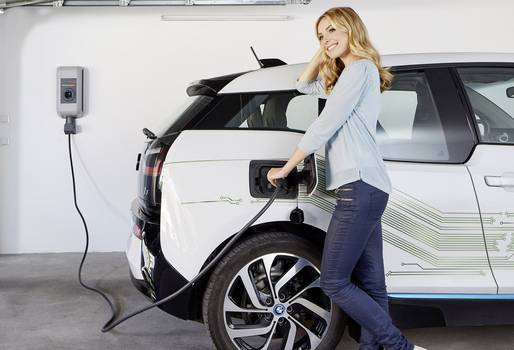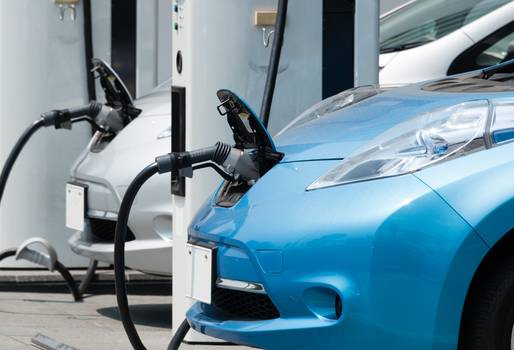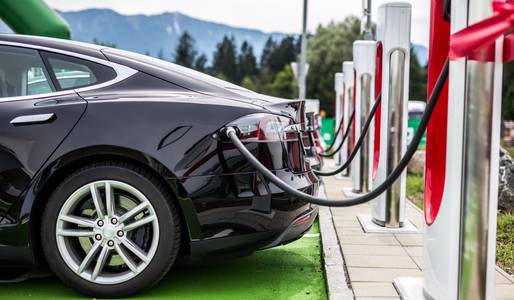Charging an electric car correctly » These factors are important
Updated: 14.06.2024 | Reading time: 10 minutes
More and more drivers prefer electric cars. This is also clearly reflected in the latest statistics from the Federal Motor Transport Authority. In 2023, there were a total of 2,844,609 new registrations in Germany. Of these, 700,206 vehicles were equipped with an electric drive. This means that electric cars now have a market share of 24.6 %.
Even though the popularity of electric cars is clearly growing, many car buyers still have reservations about switching to a vehicle with an electric drive.
Citing the very long charging times, they often turn away and opt for a new car with a combustion engine after all. After all, filling up with fuel takes nowhere near as long as charging the vehicle battery.
We will be happy to explain to you how long electric cars need to remain connected to the charging station and which factors are decisive for this.
Charging an electric car is a relatively simple process. You simply plug the charging cable into the vehicle and the charging station and start the charging process. The rest works automatically. Unfortunately, it doesn't always work so smoothly.
In order to understand why a standard household socket with earthing contact is only suitable to a limited extent and why publicly accessible charging stations charge much faster, some basic information is required:
Type of battery in the vehicle
Strictly speaking, there are no batteries in an electric car, but rechargeable batteries. Nowadays, almost exclusively lithium-ion batteries (Li-ion) are used in electric cars. According to the current state of the art, these batteries offer a large storage capacity and are capable of delivering high discharge currents.
In addition, the individual cells are very lightweight and can be arranged individually. Integration into the vehicle chassis is therefore quite simple. In our guide to battery technology, we have explained the structure and function of lithium-ion batteries in detail.
Size of the vehicle battery
The capacity of a normal AA battery is usually specified in milliampere hours (mAh). For larger rechargeable batteries, such as car starter batteries, it is given in ampere hours (Ah). If the battery capacity is multiplied by the battery voltage, the storage capacity is given in watt hours. For a 12V starter battery with 75 Ah, this results in a value of 900 watt hours (Wh) or 0.9 kilowatt hours (kWh). The energy storage units in an electric car have a capacity of approx. 25 kWh to over 110 kWh, depending on the size of the vehicle.
Loading procedure
It is essential that the correct charging procedure is followed for an electric car battery. Experts also refer to this as the IU characteristic curve (see diagram below).
From time (t1), the charging voltage (U) is limited so that not too much charging current (I) flows. Depending on the state of charge, the voltage must be slowly increased so that the maximum charging current flows between (t1) and (t2).
The maximum charging voltage per cell is reached at time (t2). The charging voltage is now kept at a constant value. At time (t3), the charging current has reached its minimum value and the battery is 100% charged.
As already mentioned, lithium battery technology offers many advantages. The batteries are small, light and incredibly powerful. To be able to use these advantages over a longer period of time, you should pay attention to a few important points. Lithium batteries are extremely sensitive to overcharging and deep discharging. For this reason, lithium batteries are continuously monitored by electronics installed in the vehicle during charging and later during operation. To prevent the battery from discharging too deeply, you are constantly informed of the current remaining range. This gives you enough time to find suitable recharging options for the electric vehicle.
Current limitation to protect the charging point
As the discharged vehicle battery is capable of absorbing an extremely high charging current, this must be limited to a greater or lesser extent. This is necessary in order not to overload the power connection of the charging device (socket, wallbox or charging station). The current limitation already described for the charging process is therefore not primarily based on the current absorption capacity of the battery. Rather, the current output capacity of the charging connection is decisive at this moment.
Difference between standard charging and fast charging
If the charging process takes place overnight at home or at a public charging station, the time required is not the decisive factor. In this case, the charging current will not place a thermal load on the vehicle battery. Depending on the power of the charging point (3.7 kW to 22 kW), normal or accelerated charging is possible. On highways or in parking garages, there are often fast charging facilities or fast chargers that recharge the vehicle battery in a short time. Fast charging is carried out with direct current, but is only possible up to a maximum of 80% of the battery charge.
Charging an electric car takes significantly longer than filling up with just 50 liters of petrol or diesel, for example. The actual charging time for an electric car depends on various factors:
Capacity of the vehicle battery
The capacity of the vehicle battery can be compared to the volume of a fuel tank. The higher the capacity in kilowatt hours (kWh), the greater the capacity of the battery. And experience has shown that filling a large tank takes significantly longer than it would with a small tank.
Residual charge of the battery
The higher the residual charge of the battery, the less electrical energy needs to be recharged until the battery is full again. In terms of time, this is primarily only noticeable in the range up to approx. 80% charge level. The lack of residual charge from 80% to 100% always takes the same amount of time, regardless of how empty the battery was beforehand.
Performance of the charging station
Apparently, a 230 V mains socket in the house supplies quite a lot of energy. You might think so when you see how quickly a kettle provides hot water. However, the power offered by an earthed mains socket is completely unsuitable for quickly charging an electric car. We have therefore listed and compared the most common sockets and power connections for charging stations.
Socket outlet with earthing contact with one phase
With a voltage of 230 V and a maximum permissible current of 16 A, this results in an output of around 3.7 kilowatts (kW).
A CEE socket outlet with one phase
If a single-phase CEE socket outlet is used, which supplies a maximum of 32 A, the connected load is around 7.4 kW.
A CEE socket outlet with three phases
If the three phases can be loaded with 16 A, the connected load is around 11 kW and with 32 A per phase a whopping 22 kW.
Maximum charging current of the vehicle
In older electric vehicles that are only charged via one phase, a current limiter was often installed. This was done to prevent the three-phase power grid from being overloaded on one side. Instead of the possible 32 A, only 20 A can then be used.
If the vehicle also allows charging with DC voltage, such as with the Tesla Supercharger, charging capacities of currently max. 150 kW are possible.
Ambient temperature
Lithium batteries do not like it hot or particularly cold. The batteries feel most comfortable at moderate temperatures. Low temperatures in winter are particularly hard on the batteries. That's why e-cars should be parked in a garage during the cold season. But even then, longer charging times are to be expected.
Charging at a mains socket
Charging at a household socket, also known as a protective contact socket or CEE socket, seems obvious and uncomplicated at first glance. After all, not every e-car owner has their own wallbox at home.
However, both electricity suppliers and car manufacturers recommend that this should only be done in an emergency. And only if a control box (ICCB In Cable Control Box) is integrated in the charging cable so that the mains socket is not overloaded by the vehicle's energy requirements. This is because sockets with an output of 230 volts and a current of 10-16 amps are actually designed to transport much smaller amounts of energy. They therefore only supply a charging power of 2.4 kW to max. 3.7 kW - much less than the actual requirements of an electric car.
Depending on which mains socket is available, the charging process can take several hours. In addition, the high load can lead to increased heating, which in the worst case can even cause a melted cable or a fire. For this reason, “emergency charging” should only take place via specially fused sockets.
Charging at a wallbox
A wallbox is preferably used to charge an electric car at home or in an employee parking lot, for example.
A wallbox is permanently connected to the electrical installation and can provide a charging capacity of up to 22 kW, depending on the design of the supply cables.
This significantly reduces the charging time and the vehicle is quickly ready for use again. After connecting the wallbox cable to the vehicle, the charger in the vehicle recognizes how much the power connection may be loaded.
For private use, the wallbox should have a permanently connected charging cable so that the cable carried in the vehicle can remain there.
Charging at a public charging station
Charging at public stations works in a similar way to charging at a wallbox. Most public charging stations are equipped with a cable and a plug that fits most electric vehicles - usually a socket for standardized “Type 2” plugs. However, some stations require you to have your own cable.
For this reason, it is recommended that you always carry a charging cable in your vehicle that fits the connection on the vehicle on the one hand and has a type 2 plug on the other.
A cable with a CCS or CHAdeMO plug is only appropriate at fast charging stations with direct current charging (often at highway service stations).
| Advantages | Disadvantages | |
|---|---|---|
| Mains socket | It can be charged at any power connection. Independence from public charging stations. Free charging with your own solar system | Actually only recommended for emergencies. A charging cable with ICCB must be used. The charging process can take a very long time. |
| Wallbox | Charging possible in the garage at home. The charging process is fast. Free charging with your own solar system | The wallbox requires its own supply line. Installation only possible by a qualified electrician. |
| Public charging stations | Extends the range of the vehicle. The charging process is fast. Partially free charging possible. | A charging cable must be carried. The vehicle is parked in public during the charging process. |
Most drivers of an electric car charge their vehicle at home at a private charging station or wallbox. In this case, however, suitable charging cables should still be readily available in the vehicle. This way, the vehicle can also be recharged on the road and there is no risk of being left with an empty battery in unforeseen situations.
Useful accessories for your electric vehicle
The following products from our range should be of particular interest to corporate customers. But there are also worthwhile offers for private customers, some of which are subsidized by the state.
Now that it has been established which criteria play an important role in charging an electrically powered car, the charging time can be calculated relatively easily. The calculation is based on a target charge level of 80%, as further charging up to 100% takes considerably longer due to the constantly decreasing charging current.
Calculate energy requirements
Subtract the current remaining charge of e.g. 20% from the target charge level of 80%. You will then receive a difference value that describes how much recharging is required. In our example calculation, the difference is 60%.
If the vehicle battery has a capacity of 36 kilowatt hours (kWh), the 60% corresponds to approx. 21.6 kWh that must be recharged. To compensate for the losses that occur during the charging process, 10% should be added, which increases the value to 23.8 kWh.
Consider the power of the charging station
Now it depends on how much power the charging connection provides. To do this, the value to be recharged of 23.8 kWh must be divided by the power of the charging connection:
- For a charging station with 3.7 kW, the charging time is 6.43 hours or 6 hours and 26 minutes.
- For a charging station with 7.4 kW, the charging time is 3.21 hours or 3 hours and 13 minutes.
- For a charging station with 11 kW, the charging time is 2.16 hours or 2 hours and 10 minutes.
- With a 22 kW charging station, the charging time is 1.08 hours or 1 hour and 5 minutes.
Especially if you are traveling for a longer period of time, you should have a concrete overview of how long it will take to “refuel with electricity”. With correspondingly high charging capacities, the times are then significantly shorter than you might think at first.
Is slow or fast charging better for the battery?
Experience has shown that it is better to charge the battery slowly rather than quickly. This is not a problem if the vehicle is charged overnight, for example. On longer journeys, however, fast charging in between cannot be avoided. The current also plays a role in discharging. The lower the discharge current, the more gentle it is on the battery. Therefore, unnecessarily strong acceleration should be avoided wherever possible. Careful use of the accelerator pedal also has a positive effect on the range.
How does the vehicle recognize when slow or fast charging is possible?
The actual charger is permanently installed in the vehicle. When connected to the charging station, the charger receives information from the charging station electronics about how high the current may be. If you are on the road and only a mains socket is available for charging, a charging cable with an integrated control box must be used. The control box knows which power socket is being used and how high the load may generally be via the respective plug adapters. In addition, control boxes and charging stations ensure that the charging voltage is only activated when the plug of the charging cable is connected to the vehicle.
Do you have to recharge the battery right after every ride?
Lithium batteries do not like deep discharging. But constant charging to 100% is not good for the batteries either. The ideal charging window is between 10 and 80%. If a vehicle is only used for short journeys of a few kilometers, it is better not to recharge the battery immediately after every journey. For longer journeys, it makes sense to time the charging process so that it is 100% charged shortly before the start of the journey.
What is the difference between a wallbox at home and a public charging station?
The wallbox in the house, or better still in the garage, works with alternating voltage. The charger in the vehicle must convert this to direct voltage in order to charge the battery. The charging capacity of most wallboxes is a maximum of 22 kilowatt hours (kWh).
Public charging stations at parking lots, where vehicles can remain parked for longer periods, also work with alternating voltage. In other words, according to the same principle as the wallbox at home. However, they have significantly higher charging capacities. Fast charging stations, which are located at highway service stations, for example, sometimes charge with direct voltage. In this case, the charger is integrated into the charging station and the current is fed directly to the vehicle battery.
Do I need my own cable at public charging stations?
Public charging stations, if they are operated with alternating current, usually do not have a fixed charging cable. In this case, you will need your own charging cable. Fast charging stations that operate with direct current are equipped with a charging cable.
Charging an electric car at home: Simply charge at the socket?
This is generally possible, but should only be done in exceptional cases. Depending on the size of the battery, the charging process can take a very long time and there is also a risk of overloading the power connection.
Can I charge my electric car at any public charging station?
In principle, any vehicle can be charged at public charging stations if the connection or plug is suitable.
How do I find the nearest public charging station?
The locations of charging stations are now displayed in the vehicle manufacturers' navigation systems. Alternatively, online map services also offer the option of searching for charging stations. Electricity providers also have smartphone apps that you can use to quickly find charging stations. In practice, it has proven useful to filter the search by the required charging capacity.
How much does it cost to charge an electric car at a public charging station?
The cost of the charging process depends not only on the amount of energy charged and whether it is charged using alternating current (AC) or direct current (DC). Basic fees, starting fees or blocking fees are often also due. Prices also vary depending on the charging provider. This makes the tariffs sometimes difficult to understand. In addition to the local electricity suppliers and car manufacturers, there are also roaming providers who accept charging cards at as many stations as possible within the charging infrastructure. On average, public charging stations charge from 50 cents (AC) or 60 cents (DC) per kilowatt hour, depending on the tariff.
How do I pay at public charging stations?
Payment is usually made via the charging card or with a debit card, credit card, cash or via an app. The costs depend on the amount of energy charged and the usage. Fast charging with direct current (DC) is usually more expensive.







